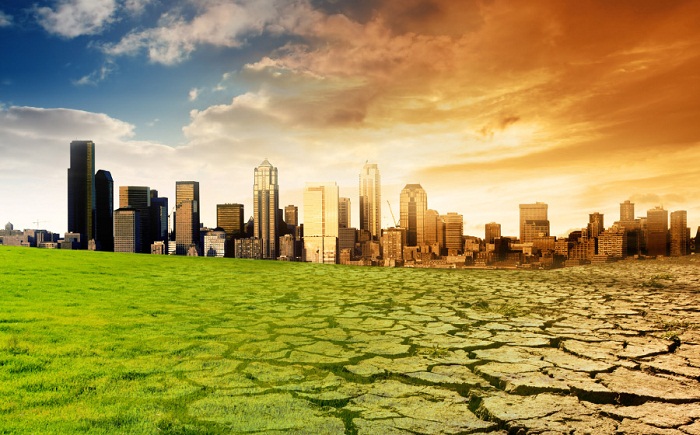Even after a year of coronavirus lockdowns and shutdowns, global emissions of greenhouse gases are still increasing at an unrelenting rate.
Today, according to initial measurements from the National Oceanic and Atmospheric Administration (NOAA), global levels of carbon dioxide emissions are higher than they have been at any given time in the past 3.6 million years. Annual methane emissions - a greenhouse gas 28 times more potent than CO2 - just experienced their largest year-on-year increase since records began in 1983.
These disappointing numbers were calculated from various sampling locations around the world; together, they paint a grim picture of our future.
After a short and rapid dip in greenhouse gas emissions last year, it seems we are pretty much back where we started. In 2020, the global surface average for CO2 emissions came out at 412.5 parts per million (ppm) - the fifth largest increase ever observed in NOAA's 63-year record.
Without the economic slowdown brought about by the current global pandemic, experts think last year's carbon emissions would have been the highest on record.
"Human activity is driving climate change," says Colm Sweeney, the assistant deputy director of NOAAs Global Monitoring Lab.
"If we want to mitigate the worst impacts, it's going to take a deliberate focus on reducing fossil fuels emissions to near zero - and even then we'll need to look for ways to further remove greenhouse gasses from the atmosphere."
As we are beginning to realize, these solutions go far beyond short-term individual responsibilities; they will ultimately require collective and continued structural reform across all major sectors of the economy.
Individual choices are not the crux of the issue
A recent study predicts the coronavirus lockdown will only cool the planet by about 0.01 degrees Celsius come 2030. That's a negligible difference, and yet there is some good news. If we combine our economic recovery with heavy investments in green power, followed by reductions in fossil fuel investments, the authors of the study found we could avoid future warming of 0.3 °C by 2050.
To do this, however, it's not just commercial and personal transportation that needs to change. In 2020, the transport sector saw a dramatic fall in emissions due to limited global movement, with aviation activity alone collapsing by up to 75 percent.
This news had many people celebrating a possible slow-down in global emissions, but while flying is often said to be one of the biggest contributors to an individual's 'carbon footprint', this narrow focus fails to account for larger, systemic factors.
Even if the aviation industry was completely dissolved tomorrow, that would only reduce collective carbon emissions by some 2.5 percent (although its overall effect on climate change might be a percent or so higher). That's a very small slice of the overall pie - as we are beginning to see, our focus must be expanded.
Last year, the economic recession brought about by the global pandemic was estimated to reduce carbon emissions by about 7 percent, and some studiessuggest only 10 percent of that steep, initial drop was attributable to a reduction in air transport specifically.
Clearly, a brief hiatus in air travel and even ground travel (which accounted for nearly half of 2020's emission decrease) is not enough to make an impact on climate change's long-term trajectory.
Electricity and heat production, on the other hand, is the biggest contributor to global warming, making up roughly 25 percent of 2010 global greenhouse emissions. Last year, however, power usage decreased by a modest 15 percent during lockdowns, and the residential sector actually saw power usage increase slightly.
"The rebound in global carbon emissions toward the end of last year is a stark warning that not enough is being done to accelerate clean energy transitions worldwide," Fatih Birol, the executive director of the International Energy Agency (IEA), recently explained.
"In March 2020, the IEA urged governments to put clean energy at the heart of their economic stimulus plans to ensure a sustainable recovery. But our numbers show we are returning to carbon-intensive business-as-usual."
Industry emissions as well as emissions from agriculture, deforestation and other land use changes are other areas where significant reductions must be made, as clearly evidenced by recent methane levels.
Methane is released as a byproduct from livestock farming, but it's also let loose from the decay of organic matter in wetlands, peatlands, bogs and tundra. Thermogenic sources like oil and gas production do not appear to be the primary driver of this powerful greenhouse gas, which suggests we need to do more than curb fossil fuel burning.
"Although increased fossil emissions may not be fully responsible for the recent growth in methane levels, reducing fossil methane emissions are an important step toward mitigating climate change," says research chemist Ed Dlugokencky.
Even when individuals decide to stay at home in unprecedented numbers - driving less, flying less and consuming less - it's still not the solution, because over 71 percent of our emissions since 1988 have been produced by just 100 companies. It's the systems around them and these companies that need to be changed.
It will take more than a global pandemic to solve the climate crisis.
ScienceAlert
More about: #ClimateCrisis
















































